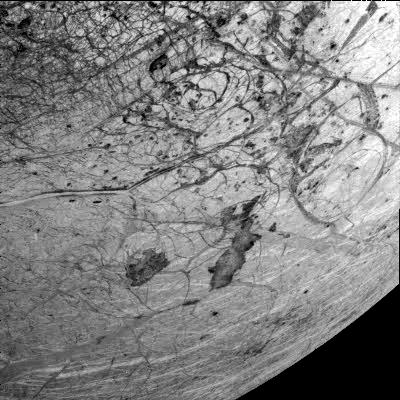Thera and Thrace Macula on Europa

| Credit | NASA/JPL |
|---|---|
| PIA Number | PIA00875 |
| Language |
|
This image of Europa's southern hemisphere was obtained by the solid state imaging (CCD) system on board NASA's Galileo spacecraft during its sixth orbit of Jupiter. The upper left portion of the image shows the southern extent of the "wedges" region, an area that has undergone extensive disruption. South of the wedges, the eastern extent of Agenor Linea (nearly 1000 kilometers in length) is also visible. Thera and Thrace Macula are the dark irregular features southeast of Agenor Linea. This image can be used by scientists to build a global map of Europa by tying such Galileo images together with images from 1979 during NASA's Voyager mission. Such lower resolution images also provide the context needed to interpret the higher resolution images taken by the Galileo during both its nominal mission and the upcoming Europa mission. North is to the top of the picture and the sun illuminates the surface from the right. The image, centered at -40 latitude and 180 longitude, covers an area approximately 675 by 675 kilometers. The finest details that can be discerned in this picture are about 3.3 kilometers across. The images were taken on Feb 20, 1997 at 12 hours, 55 minutes, 34 seconds Universal Time when the spacecraft was at a range of 81,707 kilometers.
The Jet Propulsion Laboratory, Pasadena, CA manages the mission for NASA's Office of Space Science, Washington, DC.
